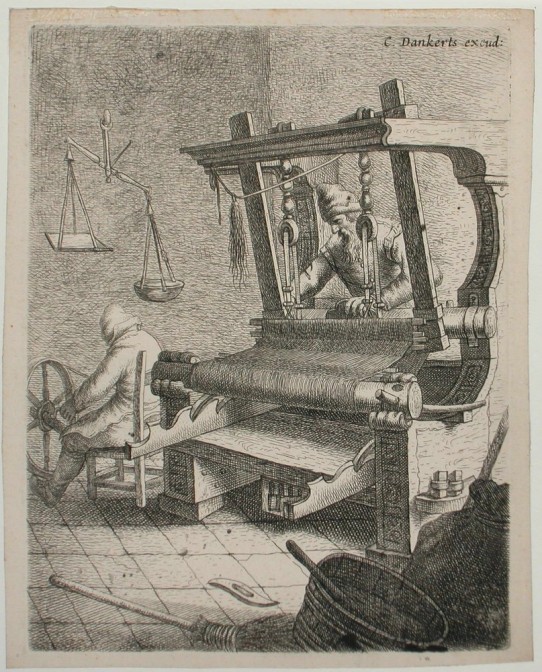Occupations often ran in the family. The eldest son usually inherited the father’s business, and would step in his father’s footsteps. Guilds often had friendly terms for children of members, with reduced fees for apprenticeships and membership. Even younger sons who could not take over their father’s business often found similar work. The son of a shoemaker might become a tailor, for example.
Of course, there are exceptions. The younger sons of farmers may have moved to the village or the city and learned a craft. Or they might have set up a cottage industry like weaving or making wooden shoes in a spare room in the farm of their brother.
If your brick wall ancestor had a particular occupation, it might be worthwhile to check who else in town had that same occupation and to see if there was a family connection. Even people with a different name might be related, since women often married colleagues of their fathers and brothers.

Weaver, 1632-1634. Credits: Jan Joris van Vliet, collection Textielmuseum (Public Domain)


I have two master tradesmen, father and son, as Danish ancestors. The son was a master mason so when I went looking for his parents, I check the guild records. His father was a guild member, too, but he was a master flax or linen weaver! Not what I expected.
Excellent information. After 6 years of a brick wall on the maiden name of my gr.gr.grandmother, I found a record that tied out Margaret to a brother who was a shoemaker – and lived in the Westfield NJ area where her spouse was a tailor and his father & siblings were hatters and shoemakers. I would like to believe Margaret met my gr. gr. grandfather thru her brother. Westfield NJ had a thriving industry in 1830-1850 relating to apparel and accessories manufacturing.
My ggg grandfather Henry Bastion, born Hendrick Bastiaanse in 1783 in Schenectady, New York, shows up in the 1850 Indiana census as a shoemaker. I never thought to wonder what his father’s occupation was. The 1850 was the first US census to show occupations. At least two of Henry Bastion’s sons, who moved with him from New York to Indiana in 1821, had professional careers. My gg grandfather was a minister, and another was a postmaster in a large city. At least one son-in-law was a farmer in Indiana. I don’t know about the rest of them, as they had common names and I don’t know for certain which ones stayed in New York and which ones moved. It’s worth trying to find out whether Hendrick Bastiaanse’s father or uncles were guild members, or at least shoemakers, in New York.
This is a very useful tip.
I have researched quite a few weaving families. In one late 18th-group in Pennsylvania, half the sons of a weaver became weavers, and some married weavers’ daughters; half of the daughters married weavers, and this went on for a few more generations as family members moved West. Documenting all this was a lot of fun.
A related pattern was that when folks were appointed to appraise estates, where the decedent was a cooper, weaver, carriagemaker, etc., one of the appraisers was usually of the same occupation — he’d know the names of specialty tools/equipment and approximate values better than folks who’d been farmers or engaged in different trades.